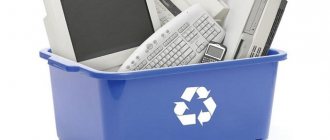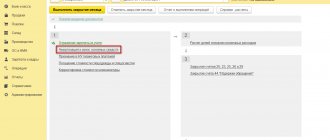Cost of work in progress and construction
The cost of work in progress includes all costs that went directly to the processing of “work in progress” objects with direct cost accounting.
When taking into account full costs, WIP includes all costs incurred in a given period, both direct and indirect (general production costs). The latter method is more common.
Below are the entries for calculating the cost using the full cost method:
| Account Debit | Account Credit | Description | Sum | A document base |
| 20.01 | 23 | Expenses of auxiliary production are distributed to the main production (OP) | The amount of expenses of this type going to the OP | Accounting certificate-calculation |
| 20.01 | 25 | General production expenses are allocated to OP | Accounting certificate-calculation | |
| 20.01 | 26 | General business expenses are distributed to OP | Accounting certificate-calculation | |
| 40 | 20.01 | Cost of main production (completed products) | Cost of finished products | Accounting certificate-calculation |
| 90.02.1 | 20.01 | Cost of work and services performed | Cost of services | Accounting certificate-calculation |
| 90.02.1 | 26 | General business expenses (not allocated to the OP) are written off to the cost of sales | Amount of general business expenses | Accounting certificate-calculation |
Liability balance
- Capital and reserves
Authorized capital
- this is the amount of funds initially invested by the owners to ensure the statutory activities of the organization; The authorized capital determines the minimum amount of property of a legal entity that guarantees the interests of its creditors
Extra capital
— a liability item on the balance sheet, consisting of the following elements:
- share premium
- the difference between the sale and par value of the company's shares; - exchange rate differences
- differences when paying for a share of the authorized capital in foreign currency; - the difference when revaluing fixed assets
is the difference when the value of fixed assets changes.
Reserve capital
- the size of the enterprise’s property, which is intended to place undistributed profits in it, to cover losses, repay bonds and repurchase shares of the enterprise, as well as for other purposes.
- Short-term liabilities
Accounts payable
- the debt of a subject (enterprise, organization, individual) to other persons, which this subject is obliged to repay.
Reserves for future expenses
In order to evenly include upcoming expenses in production or distribution costs, the organization can create reserves for: upcoming payment of vacations to employees; payment of annual remuneration for long service; payment of remuneration based on the results of work for the year; repair of fixed assets; production costs for preparatory work due to the seasonal nature of production; upcoming costs for land reclamation and other environmental measures; upcoming costs of repairing items intended for rental under a rental agreement; warranty repairs and warranty service; covering other anticipated costs and other purposes provided for by the legislation of the Russian Federation, regulations of the Ministry of Finance of the Russian Federation.
Purchase of an unfinished construction project
Real estate properties may be under construction for a long time. Moreover, they are often the subject of purchase and sale.
Postings:
| Account Debit | Account Credit | Description | Sum | A document base |
| 08.03 | 60.01 | Debt to the seller of the object | Purchase price (excluding VAT) | shipping documents, material accounting documents |
| 19.03 | 60.01 | VAT on purchase | VAT on purchase | Invoice |
| 68.02 | 19.03 | VAT deductible | VAT on purchase | Invoice |
| 60.01 | 51 | Payment to the seller | Purchase price (including VAT) | Bank statements |
| 08.03 | 60.01 | Costs of bringing the facility to readiness (by the contractor) | Cost of services (excluding VAT) | Acts on completed work, etc. |
| 19.03 | 60.01 | VAT accrued to the contractor | VAT from the contractor | Invoice |
| 68.02 | 19.03 | Contractor VAT to be deducted | VAT from the contractor | Invoice |
| 60.01 | 51 | Payment to the contractor | Cost of services (including VAT) | Bank statements |
| 68 | 51 | Payment of state duty | Duty | Bank statements |
| 08.03 | 68 | The duty is included in expenses | Duty | Accounting certificate-calculation |
| 01.01 | 08.03 | The construction project was put into operation | Initial cost (excluding VAT) | Acceptance and transfer certificates, Inventory accounting card |
Analytics for account 20 in the 1C program:

Balance sheet asset
Any property of an enterprise - machinery and equipment, real estate, financial investments, accounts receivable, etc. - are its assets. These are all things that can be converted into cash.
Assets are divided into:
- Non-negotiable
- Intangible assets
- Fixed assets
- Construction in progress
- Profitable investments in material assets
- Long-term financial investments
- Deferred tax assets
- Other noncurrent assets
- Reserves
- Value added tax on purchased assets
- Accounts receivable (payments for which are expected more than 12 months after the reporting date)
- Accounts receivable (payments for which are expected within 12 months after the reporting date)
- Short-term financial investments
- Cash
- Other current assets
Costs in work in progress
The costs of main production are collected according to the Debit of account 20 “Main production” (Order of the Ministry of Finance dated October 31, 2000 No. 94n) from the Credit of accounts:
- 02 “Depreciation of fixed assets”;
- 10 "Materials";
- 25 “General production expenses”;
- 26 “General business expenses”;
- 60 “Settlements with suppliers and contractors”;
- 69 “Calculations for social insurance and security”;
- 70 “Settlements with personnel for wages”, etc.
So, on account 20, in particular, the costs are taken into account:
- for the production of industrial and agricultural products;
- for the implementation of construction and installation, geological exploration and design and survey work;
- for the provision of services to transport and communications organizations;
- to carry out research and development work;
- for the maintenance and repair of highways, etc.
When products are produced or services are provided, the costs collected on Debit Account 20 are written off from the Credit of this account to the Debit Accounts:
- 43 “Finished products”;
- 90 “Sales”, etc.
Therefore, at any point in time, the debit balance of account 20 means the part of the costs of the main production that has not yet been converted into finished products, or the amount of expenses incurred for the performance of work (rendering services) that are not completed and not accepted by the customer. This is the cost of work in progress.
Intangible assets in the balance sheet structure
Intangible assets are those objects that do not have a tangible form, but can be identified. For example, patents, trademarks, programs, know-how, rights to use natural resources, rights to use property, copyright and related rights, etc.
Intangible assets, as well as fixed assets, are subject to depreciation.
Please note that according to PAS-8, expenses for research, training and retraining of personnel, advertising and promotion of products, reorganization, increasing business reputation, and so on are written off as period expenses. This is due to the fact that in order to be recognized as an asset, the enterprise must have a guaranteed possibility of further obtaining benefits, and the value of the asset could be reliably determined (for what amount an informed independent buyer could purchase the asset). Since business reputation, for example, cannot be sold, and scientific research can end with a negative result, using the principle of prudence, all this is classified as period costs. Thus, such intangible “assets” cannot be on the balance sheet.
Cost accounting in work in progress
The above means that the question of which entries for work in progress are generated in accounting is not correct. After all, the amount of work in progress is not the turnover of the accounts, but the balance of account 20, i.e., its slice as of a certain date. The answer to the question “Costs in work in progress - an asset or a liability” should not raise any doubts. WIP is part of the organization’s property, which is reflected in the balance sheet asset in the line “Inventories” (clause 20 of PBU 4/99).
But in what assessment the balance of work in progress is reflected depends on the procedure adopted by the organization and enshrined in its accounting policies for accounting purposes.
There are the following options for assessing work in progress (clause 64 of Order of the Ministry of Finance dated July 29, 1998 No. 34n):
| Type of production | WIP assessment method |
| Mass and serial production | - at actual production cost; — according to standard (planned) production costs; - by direct cost items; — at the cost of raw materials, materials and semi-finished products |
| Single production | - based on actual costs incurred |
Moreover, in addition to standard accounting entries for the release of finished products or write-off of costs when performing work (services), it is also possible to write off work in progress as a loss. For example, WIP for a canceled production order will be written off by the accounting entry:
Debit account 91-2 “Other expenses” - Credit account 20.
The production of a product is a process that fits into various time periods. For some types of products the production cycle is short, while for others it takes a very long time. Experienced accountants use the abbreviation WIP to indicate the unfinished process in the reporting period, the decoding of which is simple - unfinished production. To adequately assess the cost of a company's finished products, it is important to correctly calculate the volume of work in progress, i.e., products that are at the stage of an unfinished technical process and have not passed all stages of production, packaging and acceptance. Let's talk about the features of accounting for this asset, as well as about which account the work in progress is reflected in.
How is reflected in the balance sheet: features of the chart of accounts
The balance sheet reflects the financial, production and property status of any organization for a certain period. The balance sheet contains balances for all accounting sections, which can be grouped and correlated with the lines of reporting documentation.
Work in progress is located in the reporting asset (section No. 2 “Current assets of the organization”) in an orderly manner in the line “Inventories”, showing the amount of inventories for the reporting period.
Determined by NP production cost accounts.
- 20 - main production;
- 23 - additional production;
- 29 - service facility.
The enterprise forms a certain accounting policy, and that is why the reflection on other accounts of the balance of inventories may vary. In accordance with the features of the chart of accounts, account 20 is used to accumulate information on all expenses for the main industrial production.
This account is used for costs that may arise in connection with:
- Release of various types of goods.
- Providing various types of services.
- Integral implementation of construction, design, detective, geological and exploration work.
- Carrying out modernization and repair of industry.
- Conducting design and research activities.
Due to the specific development of manufactured goods, cost accounting is regulated by methodological guidelines. The Ministry of Finance does not provide a specific list, but, adhering to the standard chart of accounts, direct costs include the cost of inventories and wages to workers who carry out the industrial production process.
That is why, in economic terms and industry affiliation, the management of the enterprise independently determines direct and indirect costs.
According to a standard chart of accounts, direct expenses can be called:
- material costs;
- remuneration of employees;
- contributions to pension and health insurance;
- depreciation deductions for fixed assets that are involved in the industrial process.
Other expenses are considered indirect.
Regulated by the Accounting Regulations, the assessment of IR can be carried out according to:
- natural value;
- planned cost;
- cost of material expenses;
- total direct costs.
Enterprises that are involved in mass production select one method for estimating residual production. Organizations that produce homogeneous copies reflect IR in natural value. Having decided on the valuation method, the manager consolidates it in the accounting policy of the enterprise.
How to calculate the amount of work in progress
Account 20 is used to accumulate information about all expenses for the production of goods, the provision of services for the declared types of activities, and the performance of various contract works (design, engineering, geodetic, scientific and survey, etc.). The debit of this account includes direct costs associated with the listed types of activities, as well as indirect costs of general order and auxiliary facilities.
Direct production costs are transferred to the debit of the account. 20 from credit accounts:
- depreciation (02, 05);
- goods and materials (10, 15, 16);
- settlements with customers (60, 76), as well as personnel (70) and funds (69);
- accounting for defects that can be eliminated (28).
In addition to the main one, the company often involves auxiliary and service production. Every month in debit account. 20 part of the expenses is transferred from the credit accounts:
- auxiliary farms (23);
- indirect costs for maintaining maintenance and management personnel (25);
- share of general business expenses (26).
After the costs are fully collected at the end of the month in the debit of the account. 20, the total cost of producing the finished product or performed work/services is written off from the account credit, i.e. completed production. The accounting entry here will be as follows: D/t 40 (43, 90) K/t 20.
Remaining on account 20 the final debit balance will reflect the volume of work in progress, i.e. the cost of expenses allocated for processing, which was not completed at the end of the reporting period.
If the production process involves auxiliary and service facilities, where expenses related to the company’s activities are also recorded, and at the end of the month there remain open balances - debit balances, then this means the following:
- according to account 23 reflects the cost of auxiliary work in progress;
- according to account 29 – the amount of work in progress of the service economy.
The total amount of work in progress for the whole company in this case will consist of the balances of the debit accounts on the 20th, 23rd, 29th. Thus, not one, but several production cost accounts are involved in the formation of work in progress. The summed debit balances in these accounts create the real value of the work in progress at the end of the accounting period in question.
Long-term financial investments in the structure of non-current assets of the balance sheet
The “non-current assets” section of the “long-term financial investments” section of the balance sheet includes all investments that have a maturity of more than one year, as well as all investments that cannot be realized at any time.
Liabilities and assets of the balance sheet
The balance sheet is the main form of financial reporting. It characterizes the property and financial condition of the organization as of the reporting date. The balance sheet reflects the balances of all accounting accounts as of the reporting date. These indicators are presented in the balance sheet in a certain grouping. The balance sheet is divided into two parts: assets and liabilities. The amount of assets on the balance sheet is always equal to the amount of liabilities on the balance sheet.
WIP in accounting: basic entries
The most common method of accounting for full costs (at actual cost), when all costs incurred in the reporting period - direct and indirect - are attributed to work in progress. Postings reflecting the calculation of work in progress at actual cost are presented:
| Operation | D/t | K/t | Base |
| The costs of auxiliary production were transferred to the main ones | Accounting certificate-calculation | ||
| General production expenses are divided into main | |||
| General business expenses are included in the main | |||
| General business expenses (not allocated to the main production) are written off to the sales account | |||
| MC expenses for main production | Requirements-invoices, LZK | ||
| Depreciation of fixed assets | Help-calculation | ||
| Travel expenses | Advance report | ||
| Employees' salaries | Payslip | ||
| Contributions to funds | Help - calculation | ||
| Third Party Services | Certificates of completed work | ||
| Shortages of MC within established standards | Inventory report, calculation | ||
| Deferred expenses allocated to main production | Help-calculation | ||
| The cost of expenses for main production is transferred to the cost of finished products | |||
| The cost of services provided was transferred to the sales account |
Fresh materials
- Certificate of non-admission to the apartment, sample EVERYTHING THAT CONCERNES THE COMPANY BURMISTR.RU CRM system APARTMENT.BURMISTR.RU SERVICE FOR REQUESTING EXTRACTS FROM ROSSREESTR AND CONDUCTING…
- Balance sheet of JSC Accounting (financial) statements of enterprises 39,149.84 billion rubles — JSC VTB CAPITAL 4,892.93 billion…
- Exemption from VAT Notification of the use of the right to exemption from VAT Notification of the use of the right to exemption from VAT...
- Tax planning Tax planning in an organization Tax planning can significantly affect the formation of the financial results of an organization,…
Liability balance
An organization's liabilities are the sources of its assets. These include capital, reserves, as well as accounts payable obligations that the organization has incurred in the process of conducting business activities.
Liabilities are divided into:
- Capital and reserves
- Authorized capital
- Own shares purchased from shareholders
- Extra capital
- Reserve capital
- Retained earnings (uncovered loss)
- Loans and credits
- Deferred tax liabilities
- Other long-term liabilities
- Loans and credits
- Accounts payable
- Debt to participants (founders) for payment of income
- revenue of the future periods
- Reserves for future expenses
- Other current liabilities






